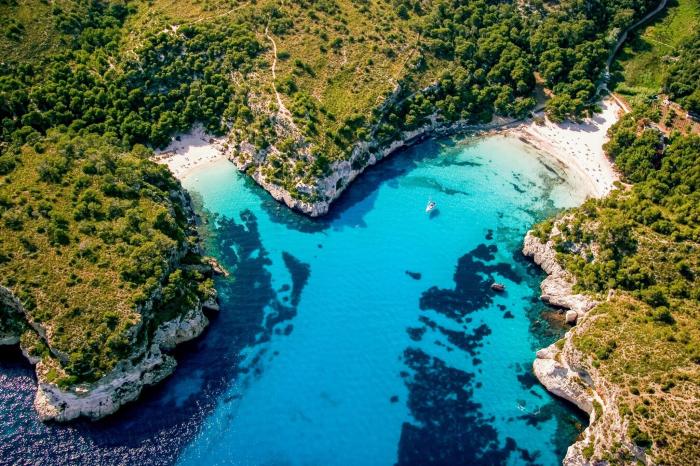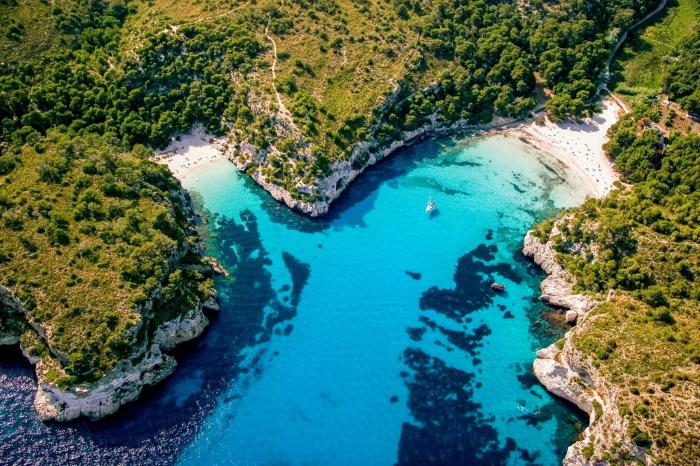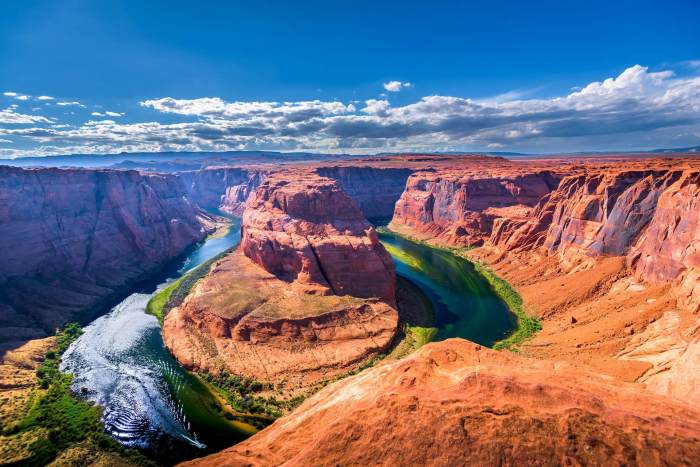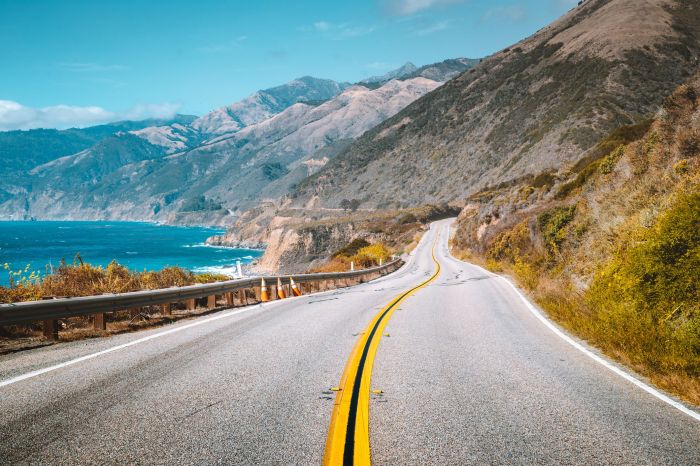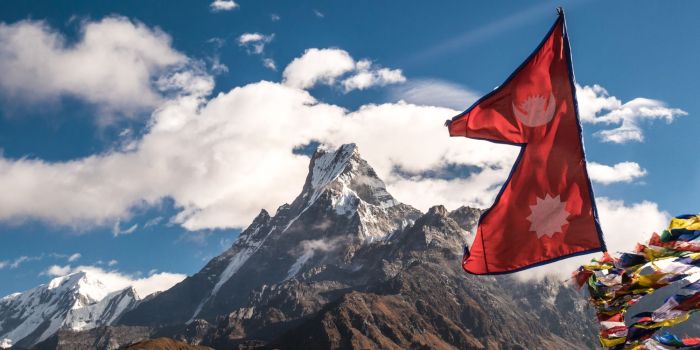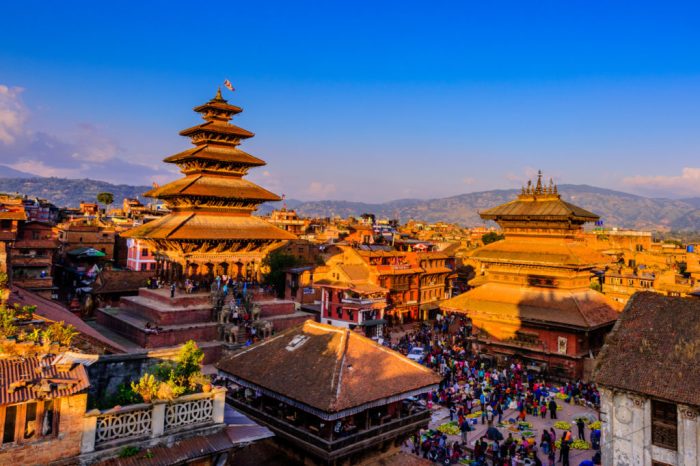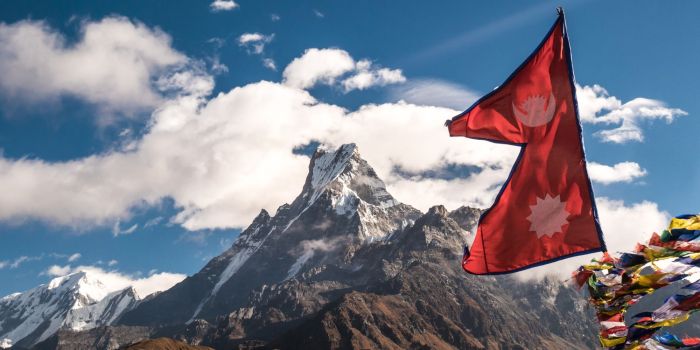Best road trips in Benin offer a unique blend of cultural immersion and breathtaking scenery. From bustling markets to ancient historical sites, exploring Benin by road is a journey into the heart of the country. This guide explores the best routes, essential planning tips, and the ideal time to visit, ensuring a memorable experience.
This comprehensive guide details popular routes, offering insights into landmarks, attractions, and the overall experience. It delves into essential planning, from visa requirements to safety precautions, and highlights the best time to visit, considering weather and crowds. The guide also covers transportation options, accommodation, food, and safety measures.
Introduction to Benin Road Trips
Benin, a vibrant West African nation, offers a captivating tapestry of culture and history waiting to be explored. Beyond its bustling cities, a network of well-maintained and scenic roads opens up the country to travelers seeking a deeper understanding of its people and traditions. Road trips in Benin are more than just journeys; they’re immersive experiences that weave through villages, markets, and historical sites, revealing the country’s soul.Road trips provide a unique perspective on Benin, allowing travelers to connect with the local communities and witness the daily lives of the people.
The journey itself becomes a crucial part of the experience, as travelers navigate through diverse landscapes and encounter a multitude of experiences, often unexpected and enriching.
Cultural and Historical Significance of Benin Road Trips
Benin’s rich history is interwoven with its vibrant culture. Road trips offer an unparalleled opportunity to immerse oneself in this heritage. Visiting historical sites, such as the Royal Tombs of the Dahomey Kings, or witnessing traditional ceremonies, provides a profound understanding of the country’s past and present. The cultural exchange, whether through interactions with locals or experiencing the local cuisine, is a crucial element of the road trip experience.
Experiencing Benin’s Diverse Landscapes
Benin boasts a variety of landscapes. From the bustling marketplaces of Cotonou to the serene lagoons of the south, and the lush forests of the interior, the scenery varies dramatically. A road trip allows for a deeper appreciation of this diversity. For instance, the journey through the savanna landscapes can be a striking contrast to the coastal areas.
This diversity ensures a journey filled with unexpected visual treats and opportunities to witness different ecosystems and ways of life.
Planning a Road Trip in Benin: Essential Considerations
Careful planning is key for a successful Benin road trip. Understanding the best time to visit, considering the country’s road infrastructure, and researching the local customs and etiquette will contribute significantly to a positive experience. Traffic conditions and potential road closures should be factored in. For example, rainy season may affect certain routes, making it essential to check for road conditions and adjust travel plans accordingly.
Essential Road Trip Supplies
To ensure a comfortable and safe journey, packing the right supplies is essential. Having a first-aid kit, necessary medications, a reliable map or GPS, and enough cash or alternative payment options are crucial. Also, consider the need for local communication methods such as a local SIM card. Remember to pack light, comfortable clothing, and appropriate footwear for different terrains.
Popular Road Trip Routes
Benin offers a diverse range of landscapes and cultural experiences, perfect for exploring by road. These routes cater to different interests and timeframes, from short day trips to extended adventures. Each route presents a unique opportunity to immerse yourself in the country’s vibrant culture and natural beauty.Exploring Benin’s road networks allows for a deeper understanding of the country’s various regions and the rich tapestry of its people.
The journey itself becomes a significant part of the experience, offering glimpses into daily life and the changing landscapes.
Coastal Routes
This route, ideal for those seeking a blend of relaxation and cultural discovery, follows the Atlantic coastline. The journey is generally smooth, and the scenery is varied, showcasing stunning beaches, fishing villages, and vibrant markets.
- Porto-Novo to Cotonou: A relatively short drive, this route highlights the bustling port city of Cotonou, with its vibrant markets and lively atmosphere. It’s a good option for a day trip or a short weekend getaway, offering a taste of urban Benin.
- Cotonou to Ouidah: This route is steeped in history. Ouidah is a UNESCO World Heritage Site, renowned for its powerful history as a major slave trading port. The journey showcases the transition from the coast’s urban landscape to a historic, culturally rich environment.
- Ouidah to Grand Popo: The scenic route offers the opportunity to visit the beaches of Grand Popo. The coastal drive is pleasant and relaxing, with numerous stops along the way for fresh seafood and local crafts.
Northern Routes, Best road trips in benin
These routes delve into the heart of Benin, offering a chance to experience the country’s diverse landscapes and rural communities. The journey often involves winding roads and a deeper connection with local life.
Benin’s best road trips offer incredible scenery and cultural immersion. Thinking about a different kind of adventure? Experiencing Vevey’s charming atmosphere, known for its stunning lakefront views and exquisite dining options, like in vevey wining and dining on lake genevas shores , might inspire you to seek similar experiences along the scenic routes of Benin. Ultimately, Benin’s road trips are a must-do for anyone seeking authentic travel experiences.
- Porto-Novo to Parakou: This route leads to the bustling town of Parakou, in the north, where the landscape transforms from coastal plains to a more savannah-like environment. The route offers an opportunity to observe the shift in vegetation and cultural practices as one travels inland.
- Parakou to Kandi: This route penetrates further into the northern region. Kandi is a town that represents a unique blend of local traditions and modern life. The journey showcases the region’s agriculture and the resilience of local communities.
Central Routes
These routes provide a balance between the coastal and northern regions, offering a variety of landscapes and attractions. The journey often presents a good blend of urban and rural experiences.
- Porto-Novo to Savalou: This route traverses the central region, showcasing the diversity of Benin’s landscape and the unique character of its towns. Savalou is known for its rich cultural heritage and offers an opportunity to connect with the local community.
Road Trip Route Comparison
| Route | Duration (approx.) | Key Attractions | Estimated Cost (approx.) | Difficulty | Scenery |
|---|---|---|---|---|---|
| Coastal Routes | 1-3 days | Beaches, markets, historical sites (Ouidah) | $50-$200 (per person) | Easy | Varied, from urban to rural |
| Northern Routes | 2-4 days | Parakou, Kandi, rural villages | $100-$300 (per person) | Moderate (some unpaved roads possible) | Savannah, rural communities |
| Central Routes | 1-2 days | Savalou, diverse landscapes | $50-$150 (per person) | Easy | Mix of urban and rural |
Note: Estimated costs are approximations and can vary based on accommodation choices, food preferences, and transportation methods. Costs are per person, for a typical budget trip.
Essential Road Trip Planning: Best Road Trips In Benin
Planning a road trip in Benin requires careful consideration of various factors to ensure a smooth and safe journey. This section details crucial steps for organizing your trip, including necessary documents, safety precautions, accommodation options, and budget estimations. Understanding these elements will significantly enhance your road trip experience and minimize potential issues.Thorough preparation is key to a successful Benin road trip.
From securing necessary documents to calculating realistic costs and understanding local customs, meticulous planning will set the stage for an enjoyable adventure. This section provides a comprehensive checklist to help you navigate the process efficiently.
Necessary Documents
Obtaining the correct documentation is paramount for a hassle-free journey. This includes visas and any required permits. The specific requirements depend on your nationality and the duration of your stay. It is essential to check the latest visa regulations on the Benin Ministry of Foreign Affairs website well in advance of your trip.
- Passport Validity: Ensure your passport is valid for at least six months beyond your intended stay. Outdated or expired passports can lead to delays and difficulties at border crossings.
- Visa Requirements: Research visa requirements for your nationality. Some nationalities may require visas, while others may be eligible for visa-free entry. The process for obtaining visas may vary and can involve application forms, supporting documents, and potential interview schedules.
- Permits (if applicable): Certain areas or activities might require specific permits. Consult the relevant authorities or your tour operator to determine any necessary permits.
Travel Precautions and Safety Measures
Safety should be a top priority during your Benin road trip. Understanding potential risks and taking necessary precautions will enhance your comfort and security.
Planning a road trip through Benin? Stunning landscapes and vibrant culture await! To make the most of your journey, checking out some French fashion wardrobe basics travel writer picks could be key. A practical, stylish, and versatile wardrobe is essential for navigating different climates and environments while keeping your fashion game on point. Consider the french fashion wardrobe basics travel writer picks for inspiration on building a travel wardrobe for your Benin adventure.
From bustling markets to serene nature reserves, your wardrobe will thank you for being prepared for all the adventures ahead!
- Health Considerations: Consult your doctor about necessary vaccinations and health precautions for Benin. Pack any required medications and maintain good hydration throughout the trip.
- Road Conditions: Be prepared for varying road conditions. Some roads might be poorly maintained, especially in rural areas. Adjust your driving style accordingly and consider having a reliable vehicle with adequate maintenance.
- Local Customs: Respect local customs and traditions. Be mindful of local dress codes and etiquette to avoid any misunderstandings.
- Emergency Contacts: Keep emergency contact information readily available, including local authorities and your embassy’s contact details.
Accommodation Options
Finding suitable accommodation along the routes is an essential part of planning. Various options are available, catering to different budgets and preferences.
- Hotels and guesthouses: These provide basic amenities and are often found in major towns and cities.
- Homestays: Offer a more immersive cultural experience by allowing you to stay with local families. These are especially common in rural areas.
- Camping: For budget-conscious travelers, camping is a great option, providing a unique connection with nature. Ensure you have the necessary camping gear and adhere to any camping regulations.
Estimated Costs
Calculating your estimated costs is crucial for budgeting your road trip effectively. This will help you make informed decisions about spending and ensure you have sufficient funds throughout your journey.
- Food: Local markets and restaurants provide affordable meals. Estimate a daily budget based on your preferences. An example is 10,000 XOF (West African CFA franc) per day for a balanced diet.
- Transportation: Calculate fuel costs, maintenance, and potential repairs. Factor in any potential delays or detours. Consider the type of vehicle and its fuel efficiency for accurate estimations.
- Activities: Research potential activities and their costs. Consider entrance fees, guided tours, or other excursions. For example, a visit to a national park may cost between 5,000-10,000 XOF.
Best Time to Visit
Planning a Benin road trip hinges significantly on choosing the right time of year. Benin’s climate plays a crucial role in the comfort and enjoyment of your journey. Understanding the weather patterns and crowd levels is key to optimizing your trip and avoiding potentially unpleasant conditions.Understanding the ideal time to explore Benin’s roads is essential for a smooth and pleasant experience.
The best time often correlates with the least amount of rain and the most pleasant temperatures. This allows for more opportunities for outdoor activities and minimizes potential disruptions.
Optimal Weather Conditions
Benin’s climate is generally tropical, characterized by a distinct wet and dry season. This fluctuation significantly impacts the suitability of different times for road trips. The dry season, generally from November to April, offers the best conditions for road travel, with fewer disruptions due to rain and a more comfortable temperature range.
Seasonal Variations
The wet season, typically from May to October, brings heavy rainfall and often results in flooded roads and challenging travel conditions. While this period offers a unique experience for those seeking the lush green landscapes, it’s crucial to weigh the potential difficulties against the benefits. The high humidity and rainfall can make outdoor activities less enjoyable and potentially disrupt travel plans.
Typical Weather Patterns
Benin’s weather patterns are broadly influenced by the rainy season, with the dry season experiencing significantly less rainfall. This variation is critical for determining the best time to travel. The dry season, with its sunny days and mild temperatures, is usually the peak tourist season, but this also means higher crowds.
Monthly Weather Comparison
| Month | Weather Condition | Average Temperature (°C) | Precipitation (mm) |
|---|---|---|---|
| November | Dry, sunny | 27-29 | 50-100 |
| December | Dry, sunny | 27-30 | 20-50 |
| January | Dry, sunny | 28-31 | 10-30 |
| February | Dry, sunny | 29-32 | 5-20 |
| March | Dry, sunny | 29-33 | 10-40 |
| April | Dry, sunny | 28-32 | 20-60 |
| May | Wet, humid | 27-29 | 150-250 |
| June | Wet, humid | 27-29 | 200-300 |
| July | Wet, humid | 26-28 | 250-350 |
| August | Wet, humid | 26-28 | 300-400 |
| September | Wet, humid | 26-28 | 250-350 |
| October | Wet, humid | 27-29 | 150-250 |
This table provides a concise overview of typical weather conditions, temperatures, and rainfall levels across different months. It highlights the marked difference between the dry and wet seasons.
Road Trip Activities and Experiences
Unveiling Benin’s vibrant tapestry through its roads requires more than just scenic drives. Immerse yourself in the rich cultural heritage, explore historical landmarks, and savor the local flavors. This section details the diverse activities that await travelers embarking on a Benin road trip, emphasizing the unique opportunities for cultural immersion and historical discovery.Beyond the breathtaking landscapes, Benin’s roads connect you to a living history.
From bustling markets to serene villages, every stop offers a glimpse into the daily lives and traditions of the people. This journey allows for profound cultural exchange and a deeper understanding of the nation’s identity.
Cultural Immersion Opportunities
Benin’s vibrant culture is best experienced through interaction with the local communities. Visiting local markets provides a sensory feast, showcasing a wide array of crafts, textiles, and agricultural produce. These markets are more than just shopping destinations; they are microcosms of local life, where you can observe traditional practices and engage in lively conversations with the vendors. A deeper immersion can be achieved by venturing into nearby villages, where you can witness traditional ceremonies, dances, and learn about the unique customs of the region.
Direct engagement with local artisans is encouraged.
Historical Sites and Monuments Accessible by Road
Benin boasts a rich history, and many significant historical sites and monuments are accessible by road. These sites offer a tangible connection to the past, providing insights into the nation’s evolution. Visiting these locations allows for a deeper understanding of the region’s history and heritage. For example, the historic sites of Abomey, with its royal palaces and museums, provide a glimpse into the kingdom’s grandeur.
Festivals and Events During Road Trip Season
Benin’s vibrant calendar of events includes festivals and celebrations that align with the road trip season. These festivals are significant cultural events, offering a unique opportunity to experience the spirit of the region firsthand. Researching the local calendar beforehand can add another dimension to your trip.
Recommended Activities for a Road Trip
- Cultural Experiences: Visiting local markets, engaging with artisans, attending traditional ceremonies, and exploring villages offer firsthand encounters with the unique culture of Benin. This fosters genuine interaction and deepens understanding of local traditions. Witnessing dances and music is another crucial part of this experience.
- Historical Exploration: Visiting historical sites such as the Royal Palaces in Abomey, museums, and monuments offer a glimpse into the rich past. These sites provide valuable insights into Benin’s evolution and historical significance.
- Culinary Delights: Benin offers a diverse culinary landscape. Savor the flavors of traditional dishes, try local delicacies at markets, and sample regional specialties. This is a unique chance to experience Benin’s food culture.
Transportation and Logistics
Embarking on a road trip in Benin requires careful consideration of transportation options, road conditions, and associated logistics. The country’s diverse landscape and varying infrastructure necessitate a practical approach to ensure a smooth and enjoyable journey. Understanding the nuances of these factors is crucial for a successful and safe adventure.
Transportation Options
Benin offers a range of transportation options for road trips, catering to different budgets and preferences. Renting a car provides the most freedom and flexibility, allowing you to explore at your own pace. Taxis, especially those for longer distances, are also a viable option, although they may lack the same level of personalized experience. Motorcycle taxis (moto-taxis) are common within cities but less suitable for extensive road trips.
Road Conditions and Challenges
Road conditions in Benin vary significantly, depending on the region and specific route. Some highways are well-maintained, while others are less developed, presenting potential challenges like potholes and uneven surfaces. Rain can significantly impact road conditions, leading to waterlogging and potentially hazardous driving situations. It is crucial to be prepared for these variations and adjust your travel plans accordingly.
Fuel Costs and Vehicle Maintenance
Fuel costs in Benin can fluctuate, but generally remain relatively affordable compared to other countries. Regular maintenance is essential to ensure your vehicle functions optimally, especially considering the potential variations in road quality. A pre-trip inspection and necessary repairs are recommended to mitigate unexpected breakdowns and ensure a comfortable journey. Consider carrying spare parts, tools, and a basic understanding of vehicle mechanics.
Recommended Vehicles
For road trips in Benin, a reliable, four-wheel-drive vehicle is highly recommended. This type of vehicle offers better traction and stability on uneven or less-maintained roads, especially during the rainy season. Vehicles with good suspension are also beneficial to navigate potential bumps and potholes effectively.
Exploring the best road trips in Benin is amazing, but planning a trip to the Himalayas is also a fantastic adventure! Think about the stunning landscapes and unique cultures you’ll encounter while meticulously crafting your itinerary for a dream Himalayan trip. Planning your dream Himalayan trip involves lots of research, and remember that a well-planned road trip in Benin is equally important, with its own captivating scenery and vibrant communities.
Ultimately, both experiences offer a unique travel journey.
Navigation and Local Maps
Navigating Benin’s roads effectively requires a combination of tools and strategies. While GPS systems are valuable, having a physical map or access to local maps can prove beneficial. Utilize these tools in conjunction with asking locals for directions, especially in less-traveled areas. Understanding basic local languages can also enhance your navigation capabilities. Using a combination of these approaches will lead to a safer and more informed road trip experience.
Accommodation and Food

Fueling your Benin road trip adventure involves more than just gas; it’s about experiencing the local flavors and finding comfortable lodging along the way. Benin offers a delightful tapestry of culinary delights and accommodation options, catering to various budgets and preferences. From charming guesthouses to modern hotels, and from vibrant market stalls to fine dining experiences, you’ll discover a world of possibilities.
Accommodation Options
Benin offers a range of accommodation options to suit different tastes and budgets. For a truly immersive experience, consider staying in guesthouses or locally-owned hotels. These establishments often provide a warm welcome and insights into local life, allowing you to interact directly with the community. For travelers seeking more modern amenities, hotels in major cities and along popular routes provide a comfortable base.
The choice often hinges on your priorities—comfort, cost, and cultural immersion.
Local Cuisine and Dining Options
Benin’s culinary scene is as diverse as its landscapes. Local cuisine is a blend of West African flavors, emphasizing fresh ingredients, spices, and hearty dishes. Along the routes, you’ll encounter bustling markets where vendors display a vibrant array of fruits, vegetables, and local delicacies. From street food stalls serving savory fufu and plantains to local restaurants offering more elaborate meals, there’s a culinary experience for everyone.
Dining in Benin is an opportunity to sample authentic flavors and savor the vibrant local atmosphere.
Restaurants and Hotels in Key Locations
- Porto-Novo: Several hotels offer various price points, including the Hotel de la Plage, known for its beachfront location, and the more budget-friendly Hotel Africa. For dining, explore the diverse restaurants in the city center, featuring both local and international cuisines. Restaurants like Le Relais are good choices for a taste of Benin’s culinary heritage.
- Cotonou: Hotels in Cotonou, such as the Palm Beach Hotel and the Hotel Le Meridien, cater to both business and leisure travelers. The city boasts a plethora of restaurants, from local eateries to international chains. Explore the options in the Ganvie neighborhood for a taste of the bustling market life.
- Ouidah: Ouidah, a historical site, features smaller guesthouses and hotels, such as the Hotel Oasis, reflecting the area’s historical charm. Local restaurants and cafes provide authentic culinary experiences, often focusing on fresh seafood and regional specialties. Look for options near the historical sites.
International and Local Food Options
While local cuisine is the heart of the Benin dining experience, international options are also available in major cities and along tourist routes. Expect to find familiar fare, including pizza, burgers, and various other Western dishes. However, don’t miss the chance to explore the local specialties, from the flavorful sauces and spices in traditional dishes to the fresh, local ingredients.
Many restaurants offer a mix of international and local dishes, providing a great opportunity to sample both cultures.
Typical Costs of Meals and Accommodations
| Location | Budget (Low) | Budget (Mid) | Budget (High) |
|---|---|---|---|
| Porto-Novo | 10-20 USD per meal, 20-50 USD per night | 20-40 USD per meal, 50-100 USD per night | 40+ USD per meal, 100+ USD per night |
| Cotonou | 8-15 USD per meal, 25-60 USD per night | 15-30 USD per meal, 60-120 USD per night | 30+ USD per meal, 120+ USD per night |
| Ouidah | 5-10 USD per meal, 15-40 USD per night | 10-20 USD per meal, 40-80 USD per night | 20+ USD per meal, 80+ USD per night |
Note: Prices are estimates and can vary based on the specific restaurant, hotel, and time of year.
Safety and Security Considerations
Road trips in Benin, like anywhere, require careful consideration of safety and security. Respecting local customs and understanding potential risks are crucial for a positive and safe experience. This section details essential precautions and provides tips for managing emergencies.
Essential Safety Precautions
Traveling safely in Benin involves proactive measures. Familiarize yourself with local laws and regulations, including traffic rules. Carry a copy of your passport and important documents. Inform someone of your itinerary and expected return time.
Local Customs and Etiquette
Benin has a rich cultural heritage. Respect local customs, dress modestly when visiting religious sites or traditional villages, and be mindful of local traditions. Engage with locals politely, and be mindful of personal space.
Potential Safety Concerns and Risks
While Benin is generally safe, some risks are inherent in any travel, especially road travel. Potential risks include petty theft, particularly in crowded areas or poorly lit locations. Road conditions can vary, so driving cautiously and being prepared for unexpected delays is important. Be aware of scams, and avoid displaying expensive items.
Staying Safe and Respecting Local Traditions
Travelers should avoid displaying excessive wealth. Be discreet about your belongings, and avoid walking alone at night in unfamiliar areas. Stay informed about current events and security advisories. Inquire about local customs before participating in any cultural activities.
Managing Emergencies During a Road Trip
Prepare for potential emergencies by carrying a first-aid kit, spare tire, and necessary tools. Maintain a communication device, such as a mobile phone with international roaming, to contact emergency services or others. Ensure your vehicle is in good working order before embarking on a trip.
Emergency Contact Information
Have emergency contact numbers readily available. This should include local emergency services and your point of contact in Benin, as well as your contact back home. This way, you have multiple options for help in case of an emergency. Knowing how to contact the appropriate people in different situations will significantly improve the likelihood of a positive outcome.
Visual Representation

Benin’s road trips offer a captivating journey through diverse landscapes, from vibrant agricultural lands to serene forests. The country’s beauty unfolds as you navigate winding roads, passing by bustling markets and welcoming villages. The experience is rich with sensory details, from the aroma of spices wafting from roadside stalls to the melodic sounds of local music. Imagine the thrill of spotting wildlife in their natural habitat, the satisfaction of connecting with the local culture, and the tranquility of witnessing the country’s natural beauty.
A Tapestry of Landscapes
Benin’s landscapes are a stunning mix of natural wonders. Rolling hills dotted with vibrant farms give way to dense rainforests teeming with life. The coastal regions boast stunning beaches, perfect for relaxation and enjoying the warm sun. These diverse landscapes are reflected in the road trip experience, providing a continuous spectacle of nature’s artistry.
A Typical Day on the Road
A typical day on a Benin road trip is filled with the rhythm of local life. You might start your day with a hearty breakfast at a roadside restaurant, the aroma of freshly cooked food filling the air. Following this, you could explore a local market, observing the vibrant colors and textures of the wares, and engaging with friendly vendors.
The afternoon might involve a scenic drive through a national park, where the opportunity to spot diverse wildlife abounds. The day could conclude with a delicious dinner at a local restaurant, immersing yourself in the warmth of Benin’s hospitality.
Evoking Images of Benin’s Landscapes
Imagine a sun-drenched morning as you drive along a winding road. The air is filled with the chirping of birds and the gentle rustling of leaves. The landscape unfolds before you, a mosaic of green fields and golden hills. Picture the deep emerald hues of the rainforest canopy, contrasted with the vibrant colors of local villages nestled within its embrace.
As the day progresses, the sun casts long shadows across the savannah, revealing the intricate patterns of the African wildlife. This is the heart of Benin, revealed in a unique perspective.
Visual Representation Table
| Experience | Description | Illustrative Image |
|---|---|---|
| Morning Drive | Sunrise over a rolling hill, with farmlands stretching out below. | A picturesque image of a sunrise over a verdant landscape. Imagine lush green fields dotted with small farms, and the gentle golden glow of sunrise highlighting the hills. |
| Local Market | A bustling market filled with colorful fabrics, spices, and local crafts. People are actively engaging in trading, showcasing the vibrant energy of the market. | A lively scene of a local market. Imagine the vibrant colors of fabrics, spices, and handicrafts displayed. The energy of the scene is captured through the interaction and activity of the people involved. |
| National Park Safari | Spotting a family of elephants grazing peacefully in the savannah. The lush green vegetation provides a backdrop to the majestic animals. | An image of a family of elephants in their natural habitat. The environment is rich with lush green vegetation, and the elephants are positioned in a way that showcases their peaceful interaction with the natural surroundings. |
| Sunset over the Savannah | The sun dips below the horizon, casting long shadows across the savannah. The colors of the sky transition from orange and yellow to deep violet and purple. | A vibrant sunset over a vast expanse of savannah. The colors of the sky transition smoothly from orange to deep purple, creating a breathtaking sight. |
Last Word
Embarking on a road trip in Benin is a rewarding experience that connects you to the country’s rich history, vibrant culture, and stunning landscapes. With careful planning and an adventurous spirit, you can create unforgettable memories on the open roads of Benin. This guide provides all the essential information to make your journey smooth and safe, enabling you to fully embrace the magic of Benin’s road trip adventures.

